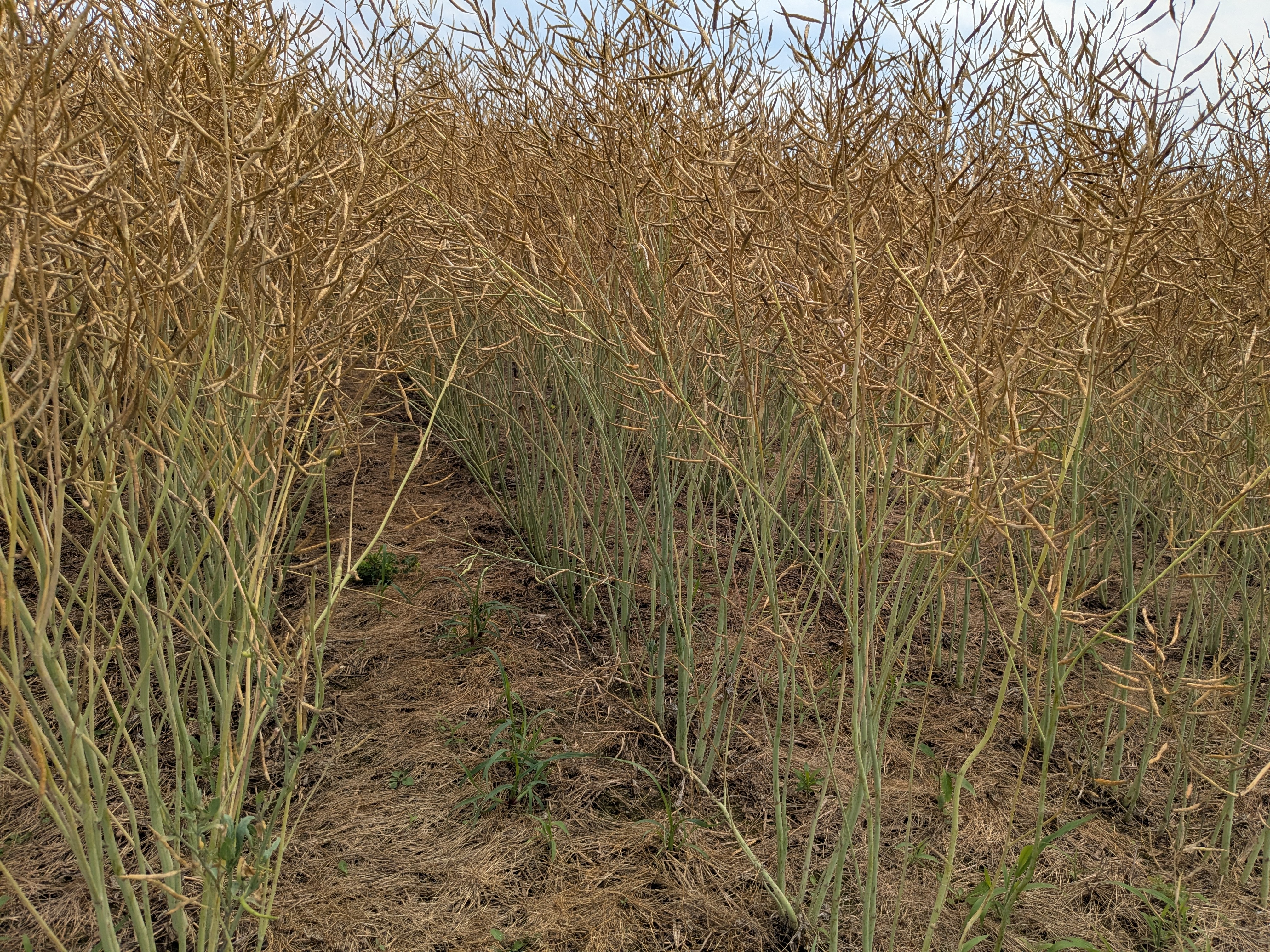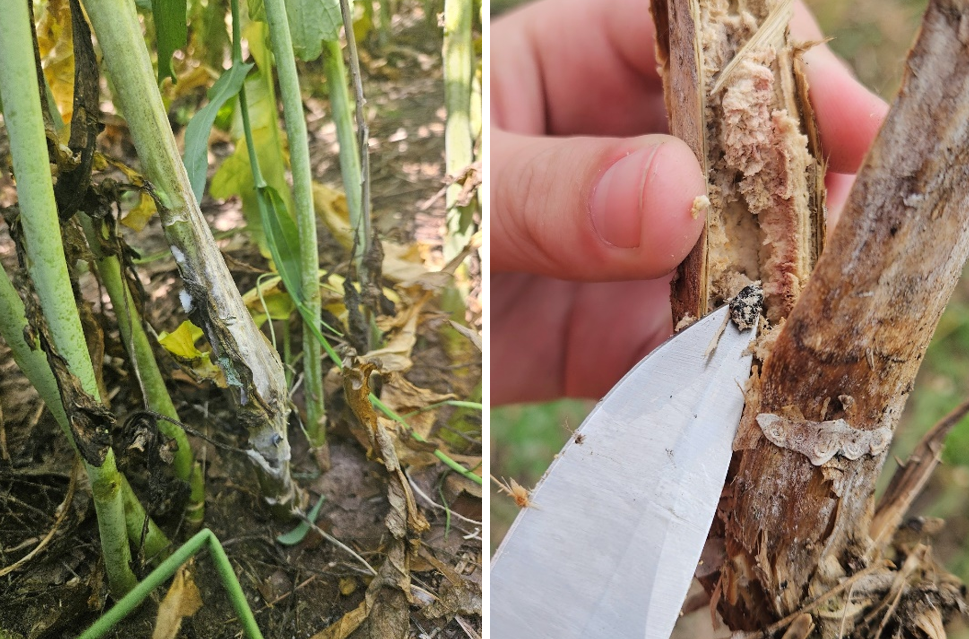Michigan canola harvest 2025 wraps up
Updates from the field on canola crop progress, insect pests and crop disease.

Harvest progress
This year’s canola harvest has wrapped up across Michigan. Spotty rains through July provided canola enough of a window to dry down for harvest. Farmers have reported yields ranging from 30-60 bushels per acre. Generally, elevators are looking for canola to be 10% moisture or dryer, which can be tricky. Restrictions on grain dryness are especially strict in canola because drying options can be limited. With a seed oil content of 40-45% by volume (double the average soybean oil content), stationary canola or canola seed that hasn’t been well cleaned can have a high risk of catching fire with heated drying.
Good seed quality has also been reported in Michigan this year, though some loads have been turned away due to green seed, which reduces canola grain quality. To aid dry down, canola growers often use desiccants. If you plan to use a desiccant, it’s important to check preharvest intervals to plan for appropriate harvest timings and rotation restrictions for cover crops or fall planted crops after canola.


Canola insect pests and disease
Several test plots at the Kellogg Biological Station experienced an estimated 25% yield loss, which appears due to severe cabbage seedpod weevil damage. In a demonstration plot on the station that was treated with a fungicide/insecticide application at 20% bloom, flowering and grain fill were prolonged, and weevil numbers were maintained well below a threshold of 20 weevils per 10 sweeps through harvest. The demo field yielded more than 10 bushels per acre higher than unsprayed areas that exceeded 20 weevils per 10 sweeps. Canola fields at the Kellogg Biological Station that were below the threshold for seedpod weevil and were not sprayed yielded 49-52 bushels per acre on average.
These observations from the Kellogg Biological Station demonstration plot are promising. However, further research in replicated trials is needed to refine treatment thresholds and timing, and assess efficacy of registered insecticides against insect pests before management recommendations can be made.
The Canola Council of Canada recommends the economic threshold for cabbage seedpod weevil to be an average of 25-40 weevils in 10 sweeps of a sweep net in five locations across a field. Since pollination is crucial to canola yields, applying an insecticide without reaching the pest’s economic threshold as “insurance” is not advised. If pesticides are needed during bloom, applications should be made in the evening to reduce bee exposure and allow for dry time before day-flying pollinators become active in the morning. There is also no economic benefit to spraying cabbage seedpod weevil at or before the bud stage, since the goal is to prevent them from laying eggs in canola pods.

There were some reports of white mold (Sclerotinia sclerotorium) infection in canola after flowering in mid-June. White mold symptoms in canola are similar to white mold infection in soybeans. The infection often starts in as a fuzzy mold (mycelium) on flower petals then moves to healthy green tissues. Infected leaves and stems grow lesions. As lesions spread, the plant may turn whitish gray or bleached white. The most damaging infections are in the main stem.
The main management tool for white mold in winter canola is fungicide application at flowering. Crop rotation does little to help control white mold because the fungus produces small reproductive structures called sclerotia that can survive in soil for many years.

For more about canola diseases and pests from the 2025 cropping season, see the following Michigan State University Extension articles:
Post-canola harvest field work
With canola harvest typically occurring a few weeks after wheat harvest in Michigan, growers can plant double-crop soybeans or cover crops. Check the Midwest Cover Crop Council Cover Crop Selector Tool to see what cover crop options may fit your goals and establish well in your region.
Canola growers typically warn that “once a canola grower, always a canola grower.” With such a small seed, seed loss during harvest is likely, and managing volunteer canola is almost inevitable. Waiting for the first round of canola seeds to emerge before applying fall herbicides can capture the first “flush” and reduce the canola seed bank by the spring.
Another consideration in managing volunteer canola would be sticking with non-GMO canola since glyphosate and glufosinate are very effective in controlling volunteer canola.
Want to see canola harvest in action? Check out the Michigan Farm News feature of Wagner Farms in St. Johns, Michigan.



 Print
Print Email
Email